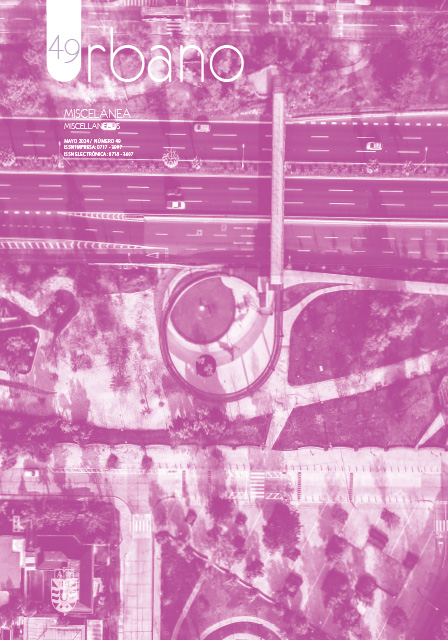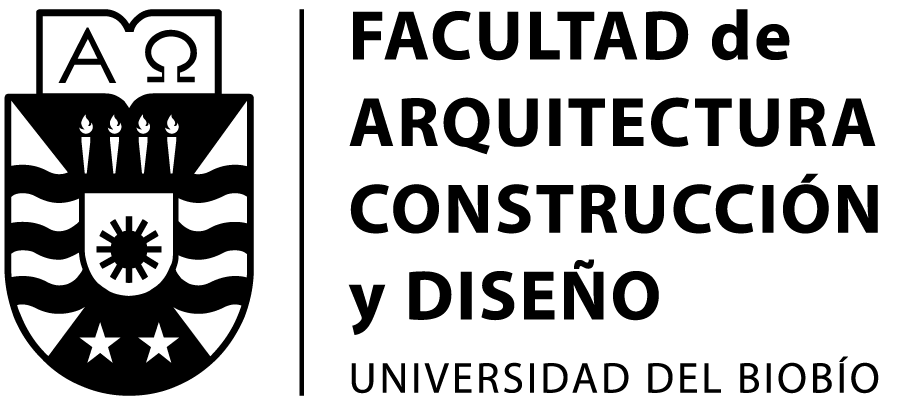Fragmented or disintegrated city? Urban models applied to intermediate Mexican cities from the perspective of geodemography
DOI:
https://doi.org/10.22320/07183607.2024.27.49.08Keywords:
utopian cities, intermediate cities, data analysis, residential segregation, urban modelingAbstract
Urban models are fundamental in the theoretical and empirical discussions about cities. However, the Latin American city models proposed by German geographers have not been questioned much despite their use, and there are few studies outside the large metropolitan areas. Therefore, this article, using geodemography, seeks to identify whether there is a residential structure pattern in the intermediate cities of Mexico's National Urban System. This methodological proposal looks to use new spatial analysis tools focused on lifestyles and the study of one of the great layers that urban models have: their residential structure. The results show that, firstly, using the models and their temporalities as a kaleidoscope, it is possible to identify the multiple patterns of cities and not just a single model. Secondly, a new disintegrated pattern appears where the classical models of the Chicago School are unrecognizable, and the fragmented city is left disintegrated.
Downloads
References
AGUILAR, A. G., y MATEOS, P. (2011). Diferenciación sociodemográfica del espacio urbano de la Ciudad de México. Eure, 37(110), 5-30. http://dx.doi.org/10.4067/S0250-71612011000100001
ÁLVAREZ, (2010). El crecimiento urbano y estructura urbana en las ciudades medias mexicanas. Quivera. Revista de Estudios Territoriales, 12(2), 94-114. https://www.redalyc.org/pdf/401/40115676006.pdf
ALZATE, J. G. V. (2023). Consideraciones teórico-metodológicas para el estudio de ciudades intermedias en sus atributos socioespaciales. Jangwa Pana: Revista de Ciencias Sociales y Humanas, 22(1), 1. https://doi.org/10.21676/16574923.4736
BORSDORF, A. (2003). Cómo modelar el desarrollo y la dinámica de la ciudad latinoamericana. Eure, 29(86), 37-49. http://dx.doi.org/10.4067/S0250-71612003008600002
BORSDORF, A., BÄHR, J., y JANOSCHKA, M. (2002). Die Dynamik stadtstrukturellen Wandels in Lateinamerika im Modell der lateinamerikanischen Stadt. Geographica Helvetica, 57(4), 300-310. https://gh.copernicus.org/articles/57/300/2002/
BUZAI G. y MONTES G. (2020). El mapa social de la ciudad de Córdoba (Argentina). Cuadernos Geográficos, 59(1), 299-315. http://dx.doi.org/10.3082
BUZAI, G. (2014). El mapa social de la ciudad de Luján, 2010. Modelo socioespacial basado en Linkage Analysis. https://ri.conicet.gov.ar/handle/11336/105072
DELGADILLO, V. (2019). Metáforas de las ciudades latinoamericanas ¿Conceptos y adjetivaciones importadas, neutras y despolitizadas?. Revistarquis, 8(2), 49-65. https://revistas.ucr.ac.cr/index.php/revistarquis/article/view/37924
FORD, L. (1996), "A New and Improved Model of Latin American City Structure", The Geographical Review (3° ed., Vol. 86) American Geographical Society. https://www.jstor.org/stable/215506
GÖBEL, C. (2015). Una visión alemana de los modelos de ciudad. El caso de Querétaro. Revista Gremium, 2(4), 47-60. https://doi.org/10.56039/rgn04a06
GÓMEZ MATURANO, R., y KUNZ BOLAÑOS, I. (2020). Tipología de barrios para un aporte metodológico desde la segregación residencial en Zona Metropolitana del Valle de México (ZMVM). Revista de urbanismo, (42), 72-87. http://dx.doi.org/10.5354/0717-5051.2020.54781
HARRIS, R., SLEIGHT, P. y WEBBER, R. (2005). Geodemographics: neighbourhood targeting and GIS. (pp. 1-289) John Wiley and Sons.
Instituto Nacional de Estadística y Geografía (INEGI). (2020). Censo de Población y Vivienda 2020. https://www.inegi.org.mx/programas/ccpv/2020/
JANOSCHKA, M. (2002). El nuevo modelo de la ciudad latinoamericana: fragmentación y privatización. Eure, 28(85), 11-20. http://dx.doi.org/10.4067/S0250-71612002008500002
JANOSCHKA, M. (2005). El modelo de ciudad latinoamericana. Privatización y fragmentación del espacio urbano de Buenos Aires: el caso Nordelta en M. Welch (Ed.). Buenos Aires a la deriva. Transformaciones urbanas recientes (pp. 96-131). Editorial Biblos.
Linares, S. (2012). Aportes de la ecología urbana y modelos neoclásicos para analizar la diferenciación socioespacial en ciudades medias bonaerenses: Pergamino, Olavarría y Tandil (2001). Revista Huellas, (16), 13-35. https://repo.unlpam.edu.ar/handle/unlpam/2782
ONU (Organización de las Naciones Unidas). (2019). World Urbanization Prospects: 2018 Revision, File 12: Population of Urban Agglomerations with 300 000 Inhabitants or More in 2018, by Country, 1950-2035 (thousands), Department of Economic and Social Affairs, Population Division. https://esa.un.org/unpd/wup/Download/7/cuadgeo.v59i1.8643
NAVARRO, J., MUÑIZ, I., y GÓMEZ-MATURANO, R. (2023). El policentrismo se impone a la dispersión en el proceso de descentralización del empleo de las ciudades intermedias mexicanas. Eure, 49(148). http://dx.doi.org/10.7764/eure.49.148.05
ORELLANA, A. (2020). Conformación metropolitana desde la fragmentación. El proceso de conurbación del Gran La Serena. Urbano, 23(41), 58-83. http://dx.doi.org/10.22320/07183607.2020.23.41.04
SEEVARETHNAM, M., RUSLI, N., LING, G. H. T., y SAID, I. (2021). A geo-spatial analysis for characterising urban sprawl patterns in the Batticaloa Municipal Council, Sri Lanka. Land, 10(6), 636. https://doi.org/10.3390/land10060636
SILVA, C., y VERGARA-PERUCICH, F. (2021). Determinants of urban sprawl in Latin America: evidence from Santiago de Chile. SN Social Sciences, 1(8), 202. https://doi.org/10.1007/s43545-021-00197-4
SZUPIANY, E. (2018). La ciudad fragmentada: una lectura de sus diversas expresiones para la caracterización del modelo latinoamericano. Revista de Estudios Sociales Contemporáneos, 19, 99-116. https://ri.conicet.gov.ar/handle/11336/89153
VALDEBENITO, C. E. (2014). La huella socioeconómica y demográfica en la estructura residencial de las ciudades medias de Latinoamérica: el caso de Viña del Mar–Chile en la década 1992-2002. Revista Electrónica de Geografía y Ciencias Sociales, 18. https://revistes.ub.edu/index.php/ScriptaNova/article/view/15078
Downloads
Published
How to Cite
Issue
Section
License
Copyright (c) 2024 Ricardo Gómez-Maturano

This work is licensed under a Creative Commons Attribution-ShareAlike 4.0 International License.
The content of articles which are published in each edition of Habitat Sustentable, is the exclusive responsibility of the author(s) and does not necessarily represent the thinking or compromise the opinion of University of the Bio-Bio.
The author(s) conserve their copyright and guarantee to the journal, the right of first publication of their work. This will simultaneously be subject to the Creative Commons Recognition License CC BY-SA, which allows others to share-copy, transform or create new materials from this work for non-commercial purposes, as long as they recognize authorship and the first publication in this journal, and its new creations are under a license with the same terms.![]()























